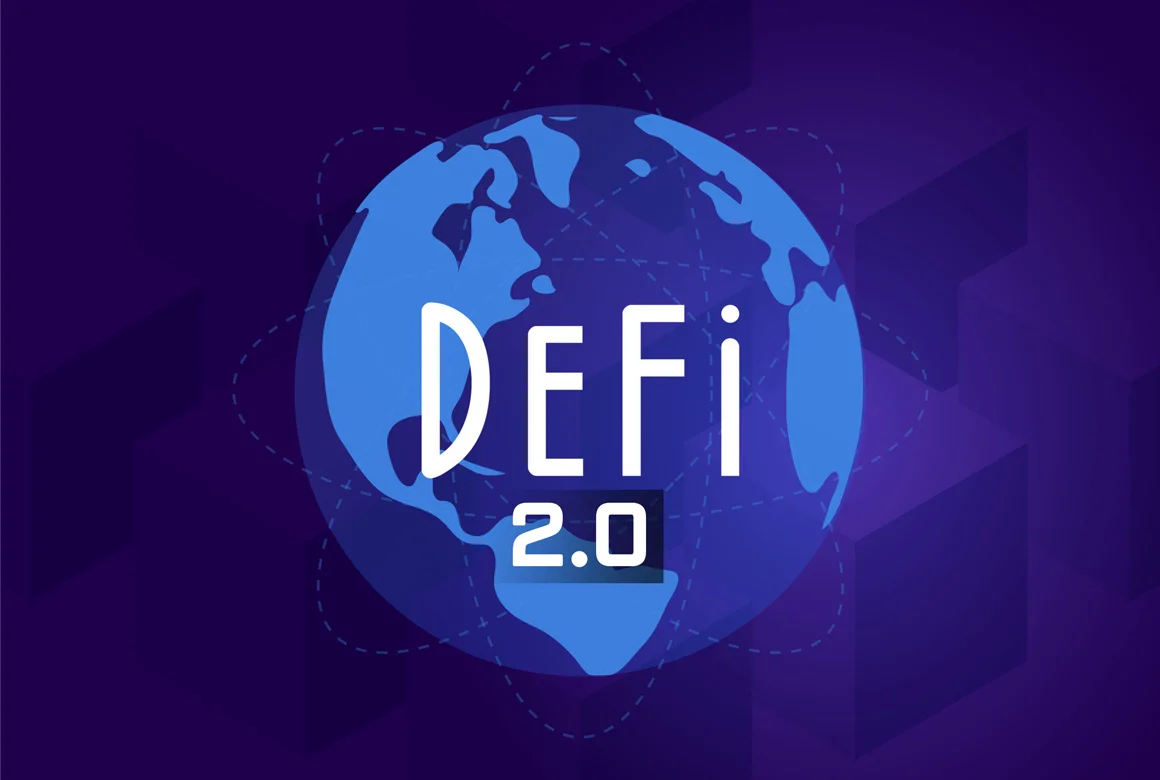
Even though the first DeFi protocols gained traction just over two years ago, although it might seem like a long time ago, the decentralized finance movement was born. Because of the volatile nature of the blockchain space, new revolutionary concepts and ideas emerge regularly. In the case of DeFi, we’re already talking about DeFi 2.0, with a slew of ambitious new protocols ushering in the next stage of the protocol’s evolution.
But what exactly is DeFi 2.0, and what does it hope to achieve? Is it a true paradigm shift or a hastily thrown-together marketing term? Let us investigate!
To understand what DeFi 2.0 is, we must first examine DeFi, what the movement has accomplished thus far, what issues remain to be addressed, and how this new wave of DeFi protocols fits into the current ecosystem.
The core of the vision for the various DeFi products is to offer decentralized alternatives to conventional financial instruments and markets.
Because DeFi protocols require liquidity from third-party providers, they must incentivize those providers. This is accomplished through liquidity mining reward programs, in which liquidity providers are compensated with tokens for lending out assets. This has proven to be an effective method of acquiring liquidity quickly; however, liquidity providers are only motivated by token rewards and may abandon a protocol if those rewards run out.
This is one of the issues that DeFi 2.0 protocols hope to address by putting protocols in charge of their liquidity. But it goes further than that.
Whereas the first generation of DeFi apps was geared toward users, the newcomers have a clear B2B focus. DeFi 2.0 products capitalize on the fact that the first generation of DeFi products successfully bootstrapped the industry by building an initial user base and developing the fundamental DeFi primitives that subsequent developments can use to create the next wave of DeFi apps. Another objective of this new generation of DeFi products is to ensure the sector’s long-term viability.
Ultimately, this should be the overarching goal of DeFi 2.0. The DeFi space is still largely self-contained today. Traditional finance is different from this, which serves the larger economy. Sure, the financial sector sometimes seems disconnected from reality, but this is only sometimes the case. Indeed, the global economy ultimately supports even the most complex and perplexing derivatives.
DeFi, on the other hand, exists almost entirely within its bubble, which inevitably limits its reach, liquidity pool, user base, and potential applications. All of this is detrimental to the sector’s long-term viability.
Fortunately, some of the most prominent DeFi 2.0 projects recognize that decentralized finance must be more than exchanging crypto assets. Carson Cook from Tokemak discussed several infrastructure layers stacked on top of one another on the Bankless podcast, beginning with electricity, then the Internet layer, then the blockchain layer, and finally, the liquidity layer. In that sense, he sees liquidity as the “Web 3 bandwidth,” and protocols like Tokemak as the Web3 version of Internet service providers.
Risk is inherent in all forms of innovation, including DeFi and crypto. This is particularly true for DeFi 2.0 since it is built on a foundation that still needs work. So, how feasible is DeFi 2.0?
The consensus in the space is that the potential risks outweigh the benefits that could be realized through the successful implementation of DeFi 2.0 concepts. However, this does not suggest that risk factors should be disregarded. There are ways to mitigate those risks, such as educating users, implementing stringent smart contract auditing procedures, and ensuring that failures do not disrupt the broader ecosystem, to name a few.
Whatever your opinion of DeFi 2.0—a generational shift in decentralized finance or just a fancy term—clear it’s that the DeFi industry is still evolving. More significantly, the initiatives that make up the DeFi 2.0 movement show that we have passed through the bootstrapping phase, arguably the most important stage of that evolution. Now that that is out of the way, DeFi 2.0 projects are equipped with the resources they require to keep advancing decentralized finance.
Contact SmartOSC if you need information about blockchain development services.
Increased acceptance and knowledge sharing have aided the spontaneous growth of cryptocurrency over the last…
Blockchain can be intimidating to research, but attending cryptocurrency events is one of the best…
Blockchain has made inroads into all major industries and is also becoming a part of…
In recent years, blockchain lending solutions have grown in popularity as a way to earn…
The scalability trilemma is still one of the blockchain's most pressing issues. Here are some…
Many people are looking for ways to get involved in the crypto world as the…